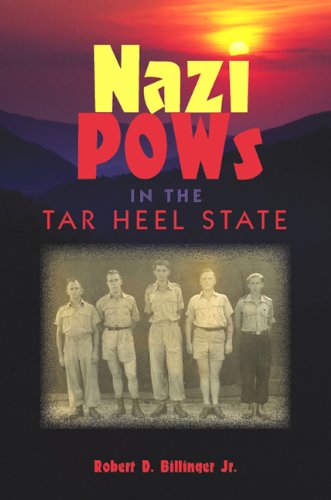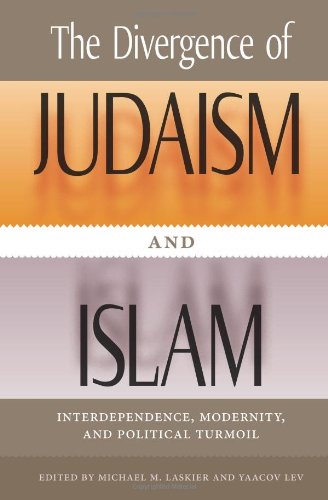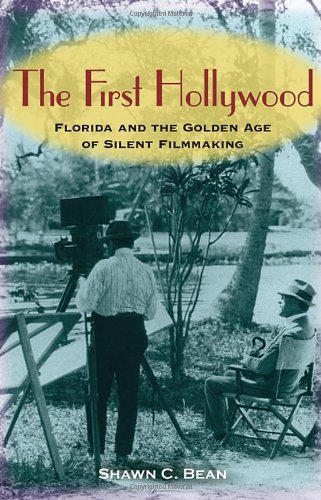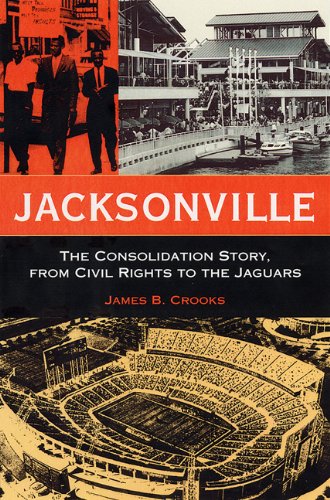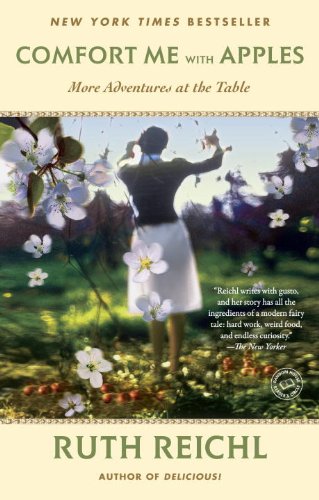Ebook Free Thinking in New Boxes: A New Paradigm for Business Creativity, by Luc De Brabandere, Alan Iny
Be the very first which are reviewing this Thinking In New Boxes: A New Paradigm For Business Creativity, By Luc De Brabandere, Alan Iny Based upon some reasons, reviewing this book will provide more advantages. Even you should read it tip by action, page by page, you could complete it whenever as well as anywhere you have time. Once a lot more, this on-line e-book Thinking In New Boxes: A New Paradigm For Business Creativity, By Luc De Brabandere, Alan Iny will give you simple of reviewing time and also activity. It likewise provides the experience that is inexpensive to get to as well as obtain greatly for far better life.
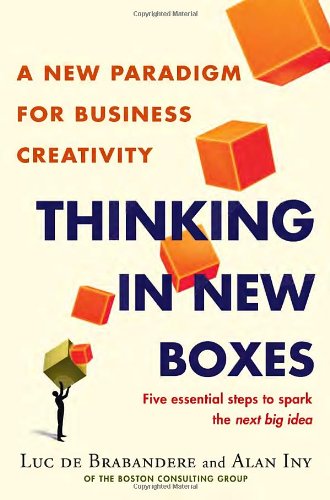
Thinking in New Boxes: A New Paradigm for Business Creativity, by Luc De Brabandere, Alan Iny

Ebook Free Thinking in New Boxes: A New Paradigm for Business Creativity, by Luc De Brabandere, Alan Iny
Thinking In New Boxes: A New Paradigm For Business Creativity, By Luc De Brabandere, Alan Iny Just how can you transform your mind to be much more open? There numerous sources that can aid you to improve your thoughts. It can be from the various other encounters and story from some individuals. Reserve Thinking In New Boxes: A New Paradigm For Business Creativity, By Luc De Brabandere, Alan Iny is one of the trusted resources to obtain. You can locate so many publications that we share right here in this internet site. And also currently, we show you among the most effective, the Thinking In New Boxes: A New Paradigm For Business Creativity, By Luc De Brabandere, Alan Iny
This Thinking In New Boxes: A New Paradigm For Business Creativity, By Luc De Brabandere, Alan Iny is quite appropriate for you as novice user. The viewers will always begin their reading behavior with the favourite motif. They might rule out the author and also author that develop the book. This is why, this book Thinking In New Boxes: A New Paradigm For Business Creativity, By Luc De Brabandere, Alan Iny is really best to review. Nevertheless, the idea that is given in this book Thinking In New Boxes: A New Paradigm For Business Creativity, By Luc De Brabandere, Alan Iny will certainly reveal you lots of points. You can begin to enjoy also reviewing up until the end of guide Thinking In New Boxes: A New Paradigm For Business Creativity, By Luc De Brabandere, Alan Iny.
In addition, we will certainly share you guide Thinking In New Boxes: A New Paradigm For Business Creativity, By Luc De Brabandere, Alan Iny in soft documents forms. It will certainly not interrupt you making heavy of you bag. You require just computer system gadget or gizmo. The link that we provide in this site is available to click and then download this Thinking In New Boxes: A New Paradigm For Business Creativity, By Luc De Brabandere, Alan Iny You recognize, having soft data of a book Thinking In New Boxes: A New Paradigm For Business Creativity, By Luc De Brabandere, Alan Iny to be in your gadget can make alleviate the visitors. So this way, be a good reader currently!
Just link to the internet to get this book Thinking In New Boxes: A New Paradigm For Business Creativity, By Luc De Brabandere, Alan Iny This is why we imply you to make use of and also use the developed innovation. Reviewing book does not indicate to bring the published Thinking In New Boxes: A New Paradigm For Business Creativity, By Luc De Brabandere, Alan Iny Developed innovation has allowed you to review only the soft file of guide Thinking In New Boxes: A New Paradigm For Business Creativity, By Luc De Brabandere, Alan Iny It is same. You could not need to go and also obtain traditionally in searching guide Thinking In New Boxes: A New Paradigm For Business Creativity, By Luc De Brabandere, Alan Iny You may not have enough time to spend, may you? This is why we provide you the best means to obtain guide Thinking In New Boxes: A New Paradigm For Business Creativity, By Luc De Brabandere, Alan Iny now!

When BIC, manufacturer of disposable ballpoint pens, wanted to grow, it looked for an idea beyond introducing new sizes and ink colors. Someone suggested lighters.
LIGHTERS?
With an idea that seemed crazy at first, that bright executive, instead of seeing BIC as a pen company—a business in the PEN “box”—figured out that there was growth to be found in the DISPOSABLE “box.” And he was right. Now there are disposable BIC lighters, razors, even phones. The company opened its door to a host of opportunities.
IT INVENTED A NEW BOX.
Your business can, too. And simply thinking “out of the box” is not the answer. True ingenuity needs structure, hard analysis, and bold brainstorming. It needs to start
THINKING IN NEW BOXES
—a revolutionary process for sustainable creativity from two strategic innovation experts from The Boston Consulting Group (BCG).
To make sense of the world, we all rely on assumptions, on models—on what Luc de Brabandere and Alan Iny call “boxes.” If we are unaware of our boxes, they can blind us to risks and opportunities.
This innovative book challenges everything you thought you knew about business creativity by breaking creativity down into five steps:
• Doubt everything. Challenge your current perspectives.
• Probe the possible. Explore options around you.
• Diverge. Generate many new and exciting ideas, even if they seem absurd.
• Converge. Evaluate and select the ideas that will drive breakthrough results.
• Reevaluate. Relentlessly. No idea is a good idea forever. And did we mention Reevaluate? Relentlessly.
Creativity is paramount if you are to thrive in a time of accelerating change. Replete with practical and potent creativity tools, and featuring fascinating case studies from BIC to Ford to Trader Joe’s, Thinking in New Boxes will help you and your company overcome missed opportunities and stay ahead of the curve.
This book isn’t a simpleminded checklist. This is Thinking in New Boxes.
And it will be fun. (We promise.)
Praise for Thinking in New Boxes
“Excellent . . . While focusing on business creativity, the principles in this book apply anywhere change is needed and will be of interest to anyone seeking to reinvent herself.”—Blogcritics
“Thinking in New Boxes is a five-step guide that leverages the authors’ deep understanding of human nature to enable readers to overcome their limitations and both imagine and create their own futures. This book is a must-read for people living and working in today’s competitive environment.”—Ray O. Johnson, Ph.D., chief technology officer, Lockheed Martin
“Thinking In New Boxes discusses what I believe to be one of the fundamental shifts all companies/brands need to be thinking about: how to think creatively, in order to innovate and differentiate our brands. We need to thrive and lead in a world of accelerating change and this book challenges us to even greater creativity in our thinking. One of the best business books I’ve read in a long time.”—Jennifer Fox, CEO, Fairmont Hotels & Resorts
“As impressive as teaching new tricks to old dogs, Thinking in New Boxes is both inspirational and practical—a comprehensive, step-by-step guide to sharpening one’s wits in order to harness creativity in the workplace.”—Peter Gelb, general manager, Metropolitan Opera
- Sales Rank: #128016 in Books
- Brand: Brand: Random House
- Published on: 2013-09-10
- Released on: 2013-09-10
- Original language: English
- Number of items: 1
- Dimensions: 9.70" h x 1.01" w x 6.39" l, 1.38 pounds
- Binding: Hardcover
- 352 pages
Features
- Used Book in Good Condition
Review
Thinking in New Boxes is a five-step guide that leverages the authors’ deep understanding of human nature to enable readers to overcome their limitations and both imagine and create their own futures. This book is a must-read for people living and working in today’s competitive environment.”—Ray O. Johnson, Ph.D., chief technology officer, Lockheed Martin
“Thinking In New Boxes discusses what I believe to be one of the fundamental shifts all companies/brands need to be thinking about: how to think creatively, in order to innovate and differentiate our brands. We need to thrive and lead in a world of accelerating change and this book challenges us to even greater creativity in our thinking. One of the best business books I’ve read in a long time.”—Jennifer Fox, CEO, Fairmont Hotels & Resorts
“As impressive as teaching new tricks to old dogs, Thinking in New Boxes is both inspirational and practical—a comprehensive, step-by-step guide to sharpening one’s wits in order to harness creativity in the workplace.”—Peter Gelb, general manager, Metropolitan Opera
“Offers excellent suggestions for thinking creatively and creating a sustainable work culture in the department and in one’s organization . . . a valuable tool for employees and managers of all institutions.”—Journal of Applied Management and Entrepreneurship
“An imaginative, proactive, and creative approach to problem solving that prospects for new ideas rather than trying to predict the future.”—Booklist
“Psychology has shown us that there’s no such thing as ‘thinking outside the box.’ The mind always thinks in boxes, big and small, and the key to creativity is finding and creating the right boxes to think with. This practical book draws out the implications of this research, and it is a joy to read. I loved the many real-world examples, drawn from the authors’ many years of consulting for BCG.”—Keith Sawyer, Ph.D., Author of Zig Zag: The Surprising Path to Greater Creativity
"Brilliantly original and relentlessly practical, Thinking in New Boxes brings a truly fresh approach to the eternal question of how do I get more – and better – ideas. It not only challenges the readers to “think differently”, but also shows them how. It is that rare business book actually worth reading cover to cover."—Jim Andrew, Chief Strategy and Innovation Officer, Chairman Sustainability Board, EVP and Member of the Executive Committee, Royal Philips
"The pinnacle resource for any business or organization, Thinking in New Boxes is a straightforward roadmap on mastering the art of futurist leadership and understanding the intersections between creativity, innovation and re-invention. A well thought out approach and a hands-down, must read for anyone tirelessly in pursuit of achieving success in an ever evolving and rapidly changing global business ecosystem."—Dr. Mehmood Khan, chief scientific officer, PepsiCo
About the Author
Luc de Brabandere is a fellow and a senior advisor in the Paris office of The Boston Consulting Group. He leads strategic seminars with boards, senior executives, and managers from a wide range of companies looking to develop new visions, new products and services, and long-term scenarios to prepare for the future. He is the author or co-author of nine books, including The Forgotten Half of Change: Achieving Greater Creativity Through Changes in Perception, and a regular columnist for various newspapers in France and Belgium. Prior to joining BCG, he was the general manager of the Brussels Stock Exchange.
Alan Iny is the senior specialist for creativity and scenarios at The Boston Consulting Group. He has trained thousands of executives and BCG consultants, runs a wide range of workshops across industries, and speaks around the world about coming up with product, service, and other ideas, developing a new strategic vision, and thinking creatively about the future. Before joining BCG in 2003, he earned an MBA from Columbia Business School and an honors BSc from McGill University in mathematics and management. Iny lives in New York with his wife and daughter.
Excerpt. © Reprinted by permission. All rights reserved.
9780812992953|excerpt
de Brabandere / THINKING IN NEW BOXES
one
New Boxes for a New Reality
Let’s start with an easy question: How many colors are there in a rainbow?
Would you say five? Seven? Ten? At some point in your schooling, you were probably told that a rainbow has a fixed number of colors. The common explanation is that the human eye sees just seven colors—red, orange, yellow, green, blue, indigo, and violet—and hence many of us were told as children that there are seven colors in the rainbow. But that’s not quite correct—a rainbow is a continuous spectrum of colors, at least according to our models of physics. To cope with complicated ideas such as this (in this case, an infinite number of colors) the mind simplifies, placing the physical reality in a more conveniently sized, manageable “box.”
Boxes can include, among many other things, ideas, approaches, philosophies, tactics, theories, patterns, and strategies. Every human idea can be expressed and/or interpreted through numerous mental models, or “boxes.” Your brain constantly uses boxes—and cannot do otherwise—to make it possible for you to cope with and process reality. The world confronts us with an infinite array of people, places, and objects; we use patterns and systems to simplify these, and categories to organize them.
We all have boxes of many different sizes. The smallest type of box would be a grouping of like things—such as “the consumer electronics companies” or “the set of coffee shops in my neighborhood.” Examples of slightly bigger boxes include stereotypes or judgments—“our customers love chocolate” or “basketball players are tall.” A paradigm is a box so big (for example, “democracy” or “freedom”) that sometimes you don’t even realize it’s still just a box, like being on a boat so big you forget you’re at sea. Boxes of other sizes include what we commonly call structures, hypotheses, frameworks, mindsets, frames of reference, and so on.
All of these various boxes help make the world more manageable. Every one of us constantly takes the broad variety of experiences we have and information we observe and reduces them to segments or categories, “boxes” with which we try to make sense of things. But even the most seemingly obvious and widely shared boxes should not be confused with reality: Accounting is always just a snapshot of the past, not an accurate representation of the present; dividing up your customers into market segments is an often-useful distortion that relies upon artificial distinctions and generalizations.
In addition to being simplified, a box is your mind’s fuzzy representation of reality. You might have a seemingly solid image of the Google logo in your mind, of primary colors for the six letters. Could you say with certainty which colors appear twice? Your boxes help you make sense of things, but only up to a certain level of detail (in this case, enough to avoid confusion with some other company’s logo), and only for a certain period of time. Every box is subject to revision, refinement, and even replacement.
For example, suppose you’re eating dinner in a restaurant and a gray-haired man who appears to be in his mid-fifties, dressed in a well-tailored suit, walks in, accompanied by a much younger woman dressed in jeans and a T-shirt. They look vaguely alike, and you immediately decide that they are father and daughter. When they sit down at the table next to you, however, you notice telling attributes, and slowly learn more about them. Perhaps the man presents the young woman with an investment opportunity, and you decide she is a wealthy client of his. Perhaps they hold hands and you decide they are spouses. Or they’re trying to distract you while their colleague steals your wallet. Regardless, you cannot avoid settling on an explanation; you cannot avoid building boxes.
The same kind of serial “deciding” occurs all the time in business. Suppose your CEO appoints a new CFO in a surprise announcement that thanks the former CFO for her service and praises her desire to spend more time with her family. You may take this announcement at face value, or you may “decide” there was too much tension between the departing CFO and the CEO. Perhaps later at the water cooler you hear rumors of fiscal impropriety, and a few days later new expense reimbursement regulations are announced, and so you decide the old CFO was padding her expense account. Or perhaps you are told of an emergency board meeting where the CEO was apparently fighting for his job and hence you decide that the CFO was offered up by him as a sacrifice.
When we see news of an airplane crash in Africa or a merger between two companies, we immediately come up with a rationale for how and why these events happen. And as all of these examples show, your interpretation of reality evolves as you gather data. Much as scientists develop working hypotheses that, after investigation, they modify into more definitive “theories,” you reshape and refine your boxes based on the new information. When refinement is not enough, for example if some fresh observation is completely incompatible with your existing boxes, a fundamentally different box may be required.
Moreover, relying upon just one box is generally not sufficient. The complexity of the world requires you to constantly juggle multiple theories, models, and strategies. As your “box” describing the couple in the restaurant evolved, you also used and updated other mental models, such as whether the soup was any good, which fork to use for dessert, whether to respond to the waitress honestly when she asked how your meal was, and how much to tip her.
The key difference to be aware of is between the multifaceted and difficult-to-understand world in front of you and the ways you perceive, interpret, and simplify it within you. Or as we like to put it, people use mental models or boxes within them (such as concepts and stereotypes) to handle the complex, continuously changing, often chaotic reality in front of them.
To be more creative, and to survive in a world of accelerating change and challenge, we believe you must do more than simply think “outside the box.” Rather, you must learn to think in new boxes, which means deliberately (not just subconsciously) creating a range of fresh mental models, and methodically exploring and prioritizing them.
You Can’t Think Without Boxes, So Don’t Even Try
You can’t think or make decisions, let alone create new ideas (or recognize a good idea when you see one), without using a range of mental models to simplify things. Most of the time, thinking includes a process of classification: Your mind is confronted with reality—a multiplicity of stimuli, elements, and events. To make sense of all these disparate inputs, your mind either relies on preexisting categories that it has already created or, if none of those categories fits the present reality, it generates new ones.
You might think of the mind as a giant cupboard, with compartments and drawers, a place to tidy up the messiness of reality, to sort it all into a much more comprehensible and manageable set of ideas. Each of us creates order by sorting; things with some shared characteristics are put together. Nobody can deal with the many complicated aspects of real life without first placing things in such boxes, the raw materials of human thinking and creativity. When you say “my customers” as a salesperson, or “my students” as a teacher, you’re using a box to categorize, or to visualize a couple of individual customers or students in your head. In contrast to saying “my children” or “my office,” where you can usually be referring to the real thing, the set of customers or students is large enough to make a simplification necessary.
Consider the first pages of the Judeo-Christian Bible. When God placed Adam in the Garden of Eden, God told him he had to be a master of the other animals: “God said, ‘Let us make mankind in our image, in our likeness, so that they may rule over the fish in the sea and the birds in the sky, over the livestock and all the wild animals, and over all the creatures that move along the ground.’ ”1
What was the first thing Adam did in order to establish his mastery? He gave names to each species of animal. In essence, Adam was saying: I am master of the lion because I told him, “You are a lion.” And I am master of the bear because I told him, “You are a bear.” Names—and words—don’t exist anywhere but in our minds, yet people need them in order to deal with reality. By giving names to animals, objects, and the other facets of reality, we draw distinctions, make judgments, create links between things, foster order, exercise control, and, most important, put things into easier-to-understand categories.
Indeed, one of the most primitive forms of a box, and perhaps one of the most important inventions of all time, is the category. When Aristotle, in his Organon, crafted ten categories (including “quantity” and “location”) in an attempt to organize all the possible kinds of things that can be the subject or the predicate of a proposition, he set the stage for the science of logic, which led to more formalized human reasoning.
Of course, categories represent just one relatively simple type of box. Thinking also requires many other, more sophisticated mental models, including stereotypes, patterns, systems, rules, assumptions, and paradigms. These various boxes arm us with helpful ways of coping with reality. If you are like most people, you stay a safe distance away from lions because you have already created a “carnivorous feline” box in your mind to identify the beast as a danger. Each time you see an animal that looks like other animals you’ve seen and categorized, you place that new idea in those previous boxes, and they help guide your reactions, in an instant.
People love to reduce uncertainty. In fact, they desperately need to reduce it. They feel woefully uncomfortable not knowing. Boxes are an easy way to simplify, to minimize your anxiety about the world. When you think about a real-life situation or problem, you humanize it: You re-create the world in your image, in your likeness, by using your judgments, assumptions, categories, and other mental models, based on everything that has been “in front of you” until that point. You need these boxes to produce further related ideas—whether complementary or opposing, closely connected or wildly distinct.
In this way, boxes are sketches, your mind’s way of simplifying, naming, and framing things—whether it is a starving lion, a crying infant, or a popular uprising in your friend’s home country—so that you can determine how best to respond to them.
Thinking “Outside the Box” Is Not Enough
But how can you use boxes to generate new creative ideas and approaches?
At a conventional workshop on creativity or innovation, you are encouraged to “think outside the box.” Leaders of such seminars have been imploring people to do this for decades, but there are three basic problems with this advice: 1) It is very hard to get out of a box, 2) it is tricky to determine which of your many boxes to think outside of, and 3) even if you do manage the trick, and get out of a specific box, it often isn’t enough—you still need a new one.
Suppose you are an executive at a bank in downtown Chicago and during a corporate workshop, someone asks you to “think outside the box.” In that context, “outside the box” doesn’t mean outside the bank, but rather outside the way you perceive your bank and, perhaps, outside your working hypotheses about banks in general.
In other words, a box is not a tangible thing. Rather, it is a model in your mind. And every mental model you create, no matter how brilliant or profitable, will eventually need to be refreshed and replaced, since the world will continue to evolve while your box stays frozen. Our four-legged friend Sartre wisely jumped over the fence that prevented him from exploring the fields behind his farm. But change occurred—the fence was taken down—and his old pattern of leaping over the fence no longer made sense or held any value. He needed to dump his old box and build a new one that no longer included the fence as part of the world in front of him.
What Sartre the dog failed to realize is that mental models can both guide you and set you free. But they can also obscure the truth and hold you back. They trap you in rigid assumptions and well-worn paths of action. They push you toward tired routines and stale conventions. They choke your creativity. They hold you captive.
So why doesn’t it work to simply “think outside the box”? One key reason is that it is difficult, often impossible, to do on command. As with Sartre (the dog once again), it often takes time and effort to change one’s mental model and come up with effective new ones. And since you always use more than one box to handle any situation, you will have numerous possible theories, hypotheses, or approaches—which means there is never any easy way of determining which box you should be trying to think “outside” of. And finally, even if you could isolate just one such box from among all those you have created, you will still struggle to think outside it because the space beyond it is too expansive. There is too much room to roam in the unknown.
The First “Outside the Box” Box
The origin of the phrase “thinking outside the box” is uncertain, but it seems to have sprung from the corporate culture of the 1960s and 1970s. It is believed that the phrase first referred to a now-familiar nine-dot puzzle used to provoke creative thought. The challenge is to connect nine dots on a square grid by drawing four straight lines through them without the pen leaving the paper, as shown below.
This at first seems impossible—and it is indeed impossible if the pen never moves outside the grid created by the dots. The only solution is to extend at least one of the lines beyond the boundaries of the grid; hence “outside the box.”2
This classic puzzle sparks discussion of two fundamental questions in the old-fashioned model of business creativity. The first is “What sort of boxes are you in?” The second is “How do you think outside them?”
The first question is usually answered by thinking about questions such as: What sort of business am I in? What, exactly, do I spend most of my time doing? What are the skills for which I am rewarded? What assumptions, spoken and unspoken, do I make about the world because of the way my day-to-day activities shape my thinking?
If you are sitting at a conference table surrounded by other automobile executives, one of the most powerful boxes might be “We are an automobile company.” If the seats at the table instead contain accountants, the most strongly held box might be “We are an accounting firm.” This model of creativity assumes that if you are an accountant you “think in a certain way” about things. You think like an accountant. Conventional theories of creativity urge you to step outside such a box, but the most creative element of that sort of thinking is usually something along the lines of asking, “Are any of our competitors doing anything different, and if so, should we copy them?”
Instead, imagine what would happen if you tried to see an accounting firm in the way people in completely different careers would see it—software engineers, nurses, or sommeliers, for example—if taken away from their own lives and temporarily placed in your shoes. Thinking outside this box in this way would add an element of difference that could lead to less conventional and more creative thinking. Would the software engineer see accounting as a set of core principles plus a set of add-on “apps”? Would the nurse triage clients based on the severity of their financial issues? This is not the sort of expansive thinking that being encouraged to “think outside the box” automatically spurs you to do.
The issue is not that thinking outside the box is a worthless exercise. It can be an important way to examine business problems, as well as perform other creative tasks. The problem is that while it helps people avoid solutions that are too obvious or conventional, it offers little to no guidance about where the best solutions can be found. Just telling someone to avoid conventional thinking is like telling them not to drive on the highway, without giving them any information on which roads to take instead—or whether they should consider flying or going by train.
So rather than asking you to consider how you can connect nine dots using four lines, there is a different sort of question, more emblematic of our “new paradigm” approach, we’d prefer you ponder.
Look at the square below and try to imagine different ways to divide it into four parts that are equal in size.
What are all the different ways in which you can do so?
You might first divide the square by drawing a vertical line and a horizontal line. You could also draw diagonals, or strips:
What other options are there? Did you consider other possible shapes?
What about creating shapes within the square that are not triangles or rectangles? What about rotating the X, or using lines that aren’t straight?
That begins to suggest an infinite number of solutions. And we haven’t even tried using curved lines yet:
If you think more about it, you’ll see that there is an infinite number of ways to divide the square into equal parts. As you develop these various models in your mind, you realize that new horizons are opening, horizons that can never be exhausted. This leap from a few answers to an infinite number of solutions is analogous to the jump from “outside the box” to “new boxes”: You come to fundamentally change the way you look at the problem, and to realize the breadth of possibility in front of you.
The Great Escape
Years ago, when we were at a conference in Paris talking to participants at a workshop about “thinking outside the box,” someone came up to us afterward and said, “What exactly is this box you’re talking about?”
The intelligent, inquisitive man who put this question to us understood that we were speaking metaphorically, but he pressed for more answers: “Who builds the box? Can the box be dismantled? Why should I try to leave it? How will getting outside the box help me come up with new ideas?”
This man’s wise questions prompted us to wonder whether telling people to “think outside the box” is productive—it seemed almost akin to telling them that they are prisoners of their boxes and should escape! In some sense, we are indeed all tied, by our boxes, to a certain view of the world, and thinking outside the box means escaping from at least one tether. But more generally, we realized that asking people to escape a prison will have a chance of working only if people realize that they are, indeed, in some form of prison, and if they understand the specifics of it. They’ll need to learn the rules and practices of the ties that bind them to their models, where the vulnerabilities are, and what they need to achieve to discover the gaps in the system and then walk through one of those gaps. Once they are outside that box, they will also have to figure out where to go—and that means finding new boxes instead.
We soon realized that the clever man in Paris played the role of a freedom-seeking prisoner perfectly for us because he had the kind of inquisitive mind and practical creative reasoning that ultimately leads to liberation. Indeed, simply insisting that one should leave the box—or the prison—won’t bring freedom. Instead, pondering the nature of the box, questioning why it is there in the first place, striving to understand the strategies and constraints of those controlling it—those are your first steps toward liberty. As we will emphasize throughout this book, doubt is the crucial first step toward creativity and liberation.
As the characters in Sartre’s No Exit found, it is often tremendously difficult for people to realize when they are chained to a model, especially if it is subconscious or so woven into the culture or their expectations that they can no longer see how much it is holding them back. Your current box may be difficult to leave simply because it is familiar and comfortable, and because the boundless space beyond seems perilously uncertain.
We believe the story of creativity is an epic of freedom: You have to be free in order to create, but you must first recognize you are a prisoner in order to break free. And this is true no matter how smart someone is, no matter how well run an organization is—we all become trapped by our boxes over time.
When you ask questions about any box, then, you are also asking questions about yourself and your mental powers: What kind of box is this? entails asking yourself, What kind of prisoner am I, and what sort of prison am I in? How can I break out? And once I achieve my freedom, what kind of world will I seek to create?
In other words, you can’t get away from your current models until you are conscious of their existence, and start to doubt and investigate them. And it also means creating new ones, and then breaking free from them to come up with yet more.
Since your brain needs models or boxes to think, the key to being creative in practical ways, to managing change during these times of such uncertainty, is to first try to understand your existing boxes to a greater degree, and to then attack any situation or issue by developing a range of new boxes. You can then carefully choose which box(es) to use, even as you embrace the ambiguity inherent in doing so. It is these new models, these new boxes, these new ways of thinking, that will free you to see not only what is possible but also what you must do to survive and to thrive.
Being inspired to create new boxes may sound difficult—but with the guidelines in this book, and some work, it will become more intuitive, and easier.
Most helpful customer reviews
16 of 17 people found the following review helpful.
A different, and useful, framework
By Srikumar S. Rao
Are you tired of being exhorted to 'think outside the box'? I know that I am!
What, exactly, is this 'box' that I am supposed to think outside of? de brabandere and Iny postulate that the box is actually a mental model we have and embedded in this is all manner of assumptions, opinions, conjectures and beliefs. In other words, all our thinking is contextual. We ALWAYS think in a context and this is shaped by our life experience and the conditionings we have been subject to.
Since the context is the box and we think in contexts the way to be creative is to Think in New Boxes and hence the title of the book. Neat way of looking at it but not an earth shattering revelation. What makes the book valuable is that they go into greater detail. It is difficult to think outside the box and virtually impossible to do so on command. They show you many different ways of creating new boxes. For example, complete the sentence "An example of a bird is..." Odds are that you could do this easily and you drew from a sample of names you knew were birds like eagle or sparrow.
Now complete the sentence "A bird is an example of..." Now it gets more complicated. Did you come up with 'flying creature'? Or 'feathered animal'? How about 'something I like to roast and eat'? (UGH!)
The former is an example of deductive reasoning and the latter of inductive reasoning and the latter generally gives you richer and different ways of looking at any situation. It helps you create new boxes more easily.
The authors show you how you create boxes and you do this with limited data. Which company, for example, does not belong in this list: Goldman Sachs, Deutsche Bank, American Express, Pfizer? Most persons build a box 'financial service companies' from the first three entries and exclude Pfizer. Now, which company does not belong in this list: American Express, Pfizer, Goldman Sachs, Deutsche Bank? It is the same list of companies but now many build a box of 'US companies' from the first three and exclude Deutsche Bank. Which leads to an important precept of the authors - doubt EVERY thing.
What I like about the book is that it is practical and gives you many useful exercises that almost automatically get you to think outside the box - I mean in new boxes :-) :-)
For example, hallowed companies like Bear Stearns and Lehmann Borthers are no longer with us. Could Microsoft vanish similarly? What if it did and executives were asked in 2025 why this happened? Would they develop useful insights into what they should be doing NOW through this exercise.
There are several techniques - and examples - of how you can gain useful insights from your customers. I can't imagine a scenario where an executive cannot gain much value from actually using these methods. Have to really devise a new box for this. :-) :-)
Get this book and enjoy it. Keep it as a reference.
19 of 22 people found the following review helpful.
Thinking In New Boxes
By Michael Taylor
"Thinking In New Boxes" by Luc De Brabandere and Alan Iny is a good title for anyone wanting to improve their creativity in a business setting. While focusing on business, the suggestions may be applied to other areas of your life. Indeed, with a global economy, the business that thinks and acts creatively stands a better chance of surviving. The authors suggest a five-step plan for the creative process:
1. Doubt Everything
2. Probe the Possible
3. Diverge
4. Converge
5. Reevaluate Relentlessly
The book is around 300 pages and covers such points as:
1. Any idea, no matter how brilliant, will eventually need to be replaced.
2. Deductive vs. inductive thinking.
3. Creativity is possible when you are humble about your existing approach to thinking about things.
4. 3 essential tasks for opening your mind for creativity.
5. The best way to find solutions is to generate a range of possibilities and test them instead of just trying to confirm your first hypothesis.
6. Most of our "aha" moments come when we soak in as much information as possible instead of depending on "pie in the sky" notions.
7. Using divergence (overcoming discomfort) to stretch yourself and see new perspectives.
8. Using convergence to prioritize decisions to work on the best ideas yo have developed.
9. Suggestions for getting insights from your customers that can help your business.
10. Be sure to consistently evaluate how your way of thinking helps you or may hold you back.
11. Examples of businesses using creativity.
The authors, well-educated and possessing several years of business experience, thankfully write in an engaging and easily understandable style.
Good read for anyone needing suggestions or ways of looking at things in a business setting (although it could be used in other areas of life also).
Recommended.
5 of 5 people found the following review helpful.
Re-examines and revitalizes thought processes needed to invent new things
By A dad
The authors tackled a difficult subject and really delivered. Everything said about thinking outside the box from the 60s and then turned into the mantra of business schools in the 90s led me to believe it was all in vain. Nothing new had been added since the mid-90s and it seemed nothing would be until this book was published.
Thinking in new boxes replaces thinking outside the box. It annihilates "outside the box," and we're better off this way. Nobody has to be told anymore to start thinking outside the box. If the first box was defined, the next one can be and so on until there's no extraterrestrial thoughts behind the curtain.
"Think in a new box" simply means to use at least one of the processes discovered/identified by the authors to go beyond where we were when we were stuck in some respect. These processes are accessible to all and there's no justification for remaining stuck indefinitely. The processes require doing what is not easy to do, namely to remain professionally skeptical, to generate options when we don't feel it necessary, and to keep practicing the process no matter what.
See all 72 customer reviews...
Thinking in New Boxes: A New Paradigm for Business Creativity, by Luc De Brabandere, Alan Iny PDF
Thinking in New Boxes: A New Paradigm for Business Creativity, by Luc De Brabandere, Alan Iny EPub
Thinking in New Boxes: A New Paradigm for Business Creativity, by Luc De Brabandere, Alan Iny Doc
Thinking in New Boxes: A New Paradigm for Business Creativity, by Luc De Brabandere, Alan Iny iBooks
Thinking in New Boxes: A New Paradigm for Business Creativity, by Luc De Brabandere, Alan Iny rtf
Thinking in New Boxes: A New Paradigm for Business Creativity, by Luc De Brabandere, Alan Iny Mobipocket
Thinking in New Boxes: A New Paradigm for Business Creativity, by Luc De Brabandere, Alan Iny Kindle
@ Ebook Free Thinking in New Boxes: A New Paradigm for Business Creativity, by Luc De Brabandere, Alan Iny Doc
@ Ebook Free Thinking in New Boxes: A New Paradigm for Business Creativity, by Luc De Brabandere, Alan Iny Doc
@ Ebook Free Thinking in New Boxes: A New Paradigm for Business Creativity, by Luc De Brabandere, Alan Iny Doc
@ Ebook Free Thinking in New Boxes: A New Paradigm for Business Creativity, by Luc De Brabandere, Alan Iny Doc
